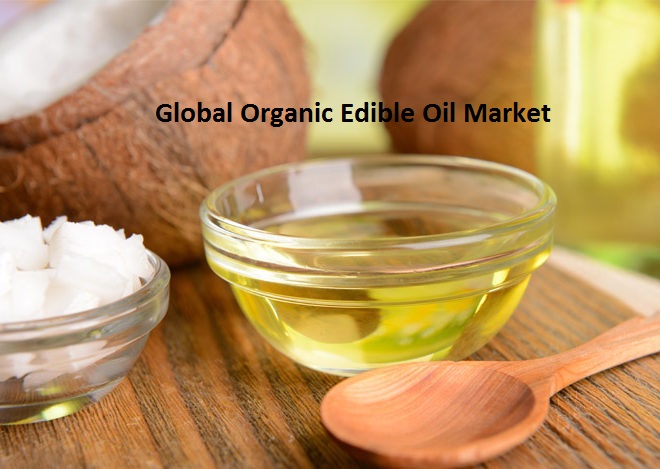Pea protein is a dietary product and protein supplement developed and extracted from yellow split peas, chickpeas, and lentils. It can be used as a food replacement or dietary supplement to boost a person’s consumption of protein or other nutrients. Pea proteins are perfect for people choosing vegan diets because they are made from plant-based sources. Additionally, they have a wide range of applications in beverages, meat alternatives, dietary supplements, and bakery goods and are non-toxic, non-allergic, and easily digestible.
According to Ken Research Analysis, the Global Pea Protein Market was valued at US$ 350 million in 2017. it is estimated to be US$ 575 million in 2022 and is expected to reach a market size of US$ 1,100 million by 2028 growing at a CAGR of ~12% during the forecast period (2022-2028). The growth can be attributed to the rise in the number of vegans, the popularity of plant-based & gluten-free goods, and the nutritional advantages of products made from peas.

For more information, request a free sample @ https://www.kenresearch.com/sample-report.php?Frmdetails=NTk2MDM5
- The market for pea proteins is predicted to increase as a result of consumers’ increased focus on their health and the replacement of traditional meat products like sausages and patties with plant-based alternatives. The market for plant-based proteins is anticipated to develop over the course of the estimated period as the number of vegan and flexitarian consumers rises.
- Due to growing consumer awareness of their health, consumption of a diet high in protein content has increased dramatically. Furthermore, due to hectic lifestyles, consumers are forced to look for nutrients in packaged food products because they are unable to regularly consume a nutritionally adequate diet. As a result, producers of packaged foods are adding protein and other nutrient-rich components to food products. The primary causes influencing the adoption of a protein-rich diet are the rising prevalence of chronic illnesses brought on by altered lifestyles.
- Supply shortage is the main issue that pea protein producers must deal with. Agriculture is already being impacted by climate change, though the effects are unevenly spread worldwide. The yields of desired crops eventually decline as temperatures rise. Pulses, which are among the most affordable sources of protein, have seen a slight increase in price in the past few years.
- Pea protein market was impacted by the COVID-19 pandemic outbreak. The implementation of lockdowns in international markets in 2020 initially had a big impact on the sales of several large stores in the food and beverage sectors. Sales declined over a short period. However, as the market for online food and grocery purchases grew in the middle of the 2020s, these sales quickly rebounded. The population continued to be under lockdown, which led to a stronger focus on healthy eating. Additionally, governments around the world worked to maintain food security in their nations and regions, which kept the food sector industries afloat.
Key Trends by Market Segment
By Type: The isolates segment held the largest market share in 2021, due to rising knowledge of the advantages of pea protein isolates and their high protein content.
- Isolates are frequently utilized as nutritional supplements in meat products, energy drinks, fruit mixes, and bakery goods because of their excellent emulsification and non-allergic properties.
- The high protein content, high emulsification, and stability features of isolates, and expanding application areas such as high-performance nutrition products and snack products are primarily responsible for the growth of the market.

For more information, request a free sample @ https://www.kenresearch.com/sample-report.php?Frmdetails=NTk2MDM5
By Nature: Organic segment held the largest market share in 2021, due to growing interest in organic products as a result of the popularity of clean-label products and the expansion of certified organic pea farm production.
- Organic pea protein concentrate is made by isolating the protein fraction from the carbohydrate and fiber components of organic pea seeds. Concentrates made from organic pea protein are less processed than isolates. Typically, they range from 70% to 85% protein. Both dry and wet milling techniques are used to remove them from organic peas.
- The need for natural products with fewer chemicals and additives is increasing the trend toward clean-label products, which is fuelling the expansion of the global organic pea protein market.
By Source: Yellow split peas segment held the largest market share in 2021, as they are the sources of peas mostly preferred by product manufacturers.
- Yellow split peas are perfect for producing pea protein isolates due to their high protein content. Comparing them to alternatives made from dairy and meat, they are valued for their amino acid composition, which led to their classification as “whole proteins.”
- 100 grams of yellow split peas provide 370 calories, 1 gram of fat, 67 grams of carbs (27 grams of fiber and 3 grams of sugar), 27 grams of protein, and 25% of the recommended daily allowance of iron.
By Form: Dry segment held the largest market share in 2021, primarily due to the low capital requirements, reduced energy and water usage compared to wet, and the significant demand for dry protein components from the food and beverage industry.
- During dry processing, whole or dehulled peas are dried, ground, and milled. Protein and starch fractions are then separated depending on mass and various particle sizes using a spiral stream of air. Protein content in products created through dry processing ranges from 50 to 60 weight percent.

By Application: The meat substitutes segment held the largest market share in 2021, due to an increase in demand for plant-based food products will raise demand for meat alternatives.
- The product has been utilized more frequently in recent years to create meat substitutes including burger patties and minced beef due to inexpensive processing costs and practical storage options. More people should employ isolates as a viable food for those who don’t consume animal-based protein as consumer concerns about meat allergies grow. These factors are driving the demand for the product in the meat substitute application.
By Geography: North America accounted for the largest market share in 2021 of the global pea protein market, the main factors driving the global market are the rising vegan population, the rising demand for health & wellness products, and the rising consumption of processed meat products.
- Growing demand for gluten-free products, rising concerns about cardiovascular diseases (CVDs) caused by red meat intake, and robust expansion in the sports nutrition industry in North America are likely to boost the regional market over the forecast years.
- The presence of significant meat producers like JBF, Tyson, National Foods, and Cargill in the United States is also anticipated to increase demand for pea protein as a texturizing agent in meat production. Furthermore, it is anticipated that the availability of grains as sources of protein will decline due to growing grain consumption for bio-based compounds like canola and soy. As a result, pea protein is anticipated to become essential.

To more regional trends, Ask for a Customization @ https://www.kenresearch.com/ask-customization.php?Frmdetails=NTk2MDM5
Competitive Landscape
The Global Pea Protein Market is highly competitive with ~200 players which include globally diversified players, regional players as well as a large number of country-niche players each with their niche in the protein market.
Large global players control about ~15% of the market, some of the major players in the market include Roquette, Dupont, Glanbia Nutritionals, Ingredion, Scoular, Burcon, Shandong, Axiom, Cosucra, Sotexpro.
Recent Developments Related to Major Players
- In September 2021, Roquette Fréres established a brand-new center of competence. By concentrating just on plant protein, this center will broaden the range of opportunities in terms of food innovation, the discovery of novel proteins, and new manufacturing techniques.
- In September 2020, Roquette Fréres planned to build the biggest pea protein plant in the world in Portage la Prairie, Manitoba, Canada, which is a suburb of Winnipeg. The development of this new facility seeks to satisfy the rising demand for pea protein on a global scale.

Conclusion
The Global Pea Protein Market Size, Segments, Outlook, and Revenue Forecast 2022-2028 is forecasted to continue the exponential growth that is witnessed since 2019, due to expanding consumer awareness about the importance of eating a healthy diet and maintaining an active lifestyle. Though the market is highly competitive with ~200 players, few global players control the dominant market share and regional players also hold a significant market share.
Note: This is an upcoming/planned report, so the figures quoted here for a market size estimate, forecast, growth, segment share, and competitive landscape are based on initial findings and might vary slightly in the actual report. Also, any required customizations can be covered to the best feasible extent for Pre-booking clients, and the report delivered within a maximum of 2 working weeks.
Market Taxonomy
By Type
- Isolates
- Concentrates
- Textured
By Nature
- Organic
- Conventional
By Source
- Yellow Spit Pea
- Chickpea
- Lentils
By Form
- Wet
- Dry
By Application
- Meat Substitutes
- Functional Foods
- Bakery Products
- Beverage
- Dietary Supplements
- Others
By Geography
- North America (USA, Canada, Mexico)
- Europe (Germany, UK, Italy, France, Spain, Rest of Europe)
- Asia Pacific (China, India, Japan, South Korea, Australia, Indonesia, Rest of Asia Pacific)
- LAMEA (Latin America, Middle East, Africa)
Key Companies
- Roquette
- Dupont
- Glanbia Nutritionals
- Ingredion
- Scoular
- Burcon
- Shandong
- Axiom
- Cosucra
- Sotexpro

